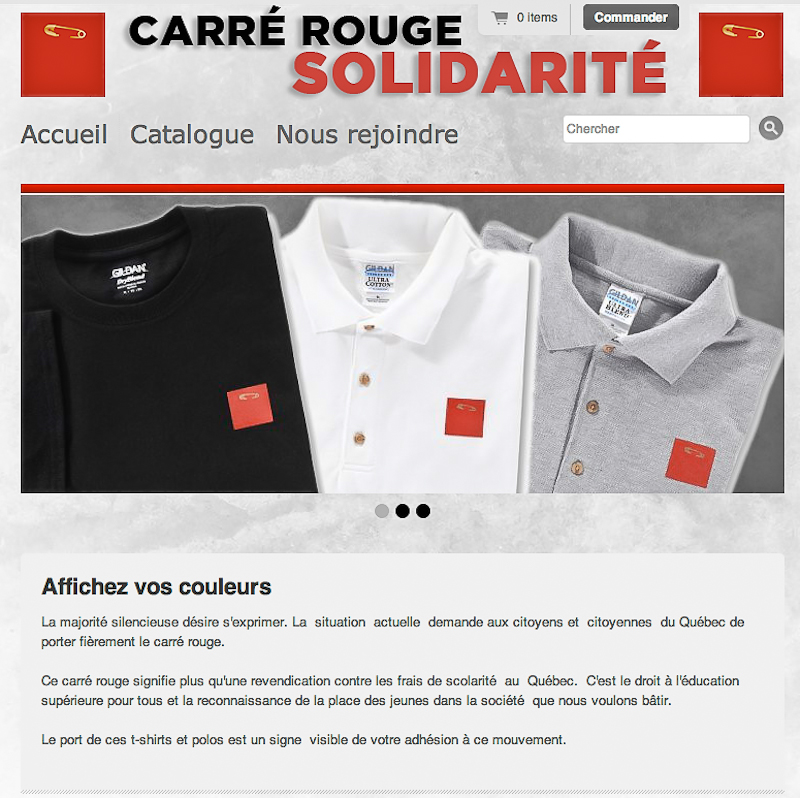
A Montreal man is rekindling the infamous red square symbol that blanketed the streets of Quebec last year during student protests against tuition hikes—but not for the reasons you might think.
Raymond Drapeau of Longueuil, Que. has gained “tentative approval” for trademark rights to the infamous red square, or “carré rouge,” to use it as a logo for a new clothing line he calls “Carré Rouge Solidarité,” according to the Globe and Mail.
The website for Drapeau’s business offers a small collection of t-shirts and polos, available in black, white, or grey with the red square logo on the chest. The shirts are priced from $18 to $28.
Drapeau told the Globe and Mail he hopes to give the symbol wider exposure and would consider donating some of the profits to student unions that were involved in the protests.
But many of those student groups are frustrated with the revelation and see Drapeau’s project as the commercialization of a symbol intended to represent social justice and opposition to austerity.
“To see it recuperated for commercial use, well it’s an affront to what the red square stands for, and it’s very contrary to what the red square means,” Benjamin Gingras, a spokesperson for L’Association pour une solidarité syndicale étudiante, one of the Quebec student unions involved in the protests, said.
Quebec students first wore the red square symbol during protests in 2005, when Jean Charest’s Parti Libéral du Quebec (PLQ) government cut $103 million in grants and bursaries for post-secondary education, and converted it into loans, according to CBC.
The red square has since become an internationally recognized symbol of solidarity against student debt and increasing tuition fees, and resurfaced in 2012 during the largest student strikes in Quebec’s history, when Charest proposed a 75 per cent hike in tuition fees.
The red square is a symbol of the French expression “squarely in the red,” or “squarely in debt,” in the case of students, according to Gingras.
“I think people in the movement are just rolling their eyes right now because it is so ridiculous,” Samuel Harris, vice-president (external affairs) for McGill University’s student society, said.
Harris said he doubts the clothing line will be successful. The red square was never intended to become a commodity, he said.
“What was good about the red square was that anybody could just take a red square of fabric, get some scissors, get out a pin, cut a red square and that’s all you needed,” Harris said.
Jessica McCormick, national chairperson for the Canadian Federation of Students said the red square has meant different things for many different people.
“Whether it’s trademarked or not, you can’t really take that symbolism or meaning away from the people who use it,” she said.
Although Drapeau’s trademark rights over the red square will not prevent students from using the symbol for non-commercial use, Gingras said ASSÉ is not excluding any options for how they will respond, including legal action.
“We’re looking into contesting Drapeau’s claim through the trademark law proceedings, as there’s a 60 day grace period which allows for us to do so,” Gingras said. “But, in either case, we’re not about to stop using the red square as a symbol in any way, shape, or form.”





